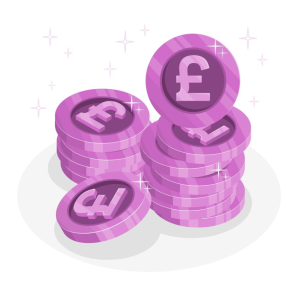Over the last ten years, credit card interest rates have soared disproportionately compared to the Bank of England’s base rate, placing a significant financial burden on consumers. According to new research by TotallyMoney, while the base rate has risen by 4.75 percentage points since 2014, the average credit card rate has surged by 6.9 percentage points, with some lenders increasing their rates by as much as 11 percentage points.
A Steep Climb in Rates
The analysis highlights a worrying trend for credit card holders. From a period of relative stability in the base rate between 2014 and 2022, credit card APRs have seen substantial hikes. For instance, the base rate increased by just 0.25 percentage points during this period, yet major banks raised their credit card rates by an average of 2.6 percentage points, with two notable increases of 5%. This trend has continued, with APRs growing even as the base rate has climbed more sharply since December 2021.
Alastair Douglas, CEO of TotallyMoney, points out that the rise in APRs started well before the recent base rate hikes. “APRs were slowly rising, with lenders now charging customers up to 11 percentage points more interest on their credit card borrowing than a decade ago,” Douglas stated. He also noted that since the last base rate increase in the summer, APRs have risen by another 0.77 percentage points.
Financial Impact and Solutions
The financial implications of these rising rates are significant, especially for the 51% of customers who carry over £32bn of debt each month. Andrew Hagger, a personal finance expert from Moneycomms.co.uk, emphasized that while those who pay off their balances monthly aren’t affected, the majority who carry balances are facing a growing financial strain.
However, there is a silver lining. Douglas suggests that balance transfer offers, which can halt interest on existing debt for up to 28 months, represent a potential relief for those struggling with high-interest debt. “If eligible, you could press pause on interest payments until August 2026, allowing you to pay off the debt quicker, cover other expenses, or save for a rainy day,” he advised. He also recommended looking for offers that provide pre-approval and guarantee the interest rate, limit, and duration to ensure transparency and suitability.
Market Trends
The research also highlighted the discrepancies among lenders. While Metro Bank currently offers one of the lower rates at 18.9%, others like the NewDay branded John Lewis Partnership Card and Sainsbury’s Bank card are charging some of the highest rates at 27.90% and 26.90%, respectively. This variation underscores the importance of shopping around for the best credit card deals to mitigate the impact of rising rates.
Looking Ahead
As credit card rates continue to outpace the base rate, consumers are advised to stay vigilant about their borrowing choices and consider strategic financial planning to manage or reduce high-interest debt. With economic pressures likely to persist, understanding the full scope of credit terms and actively seeking better options will be key to maintaining financial health in challenging times.






